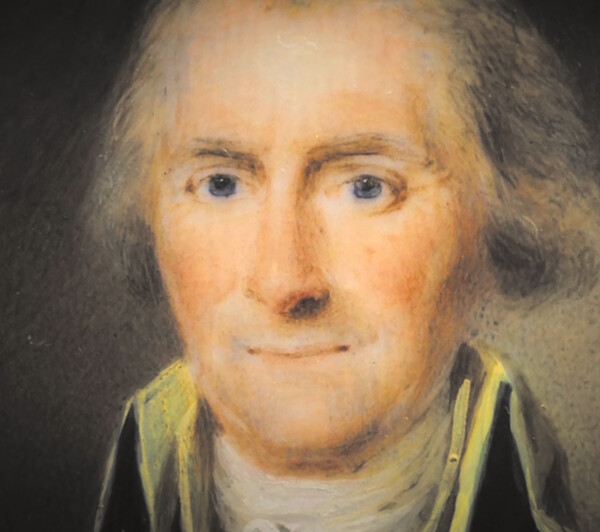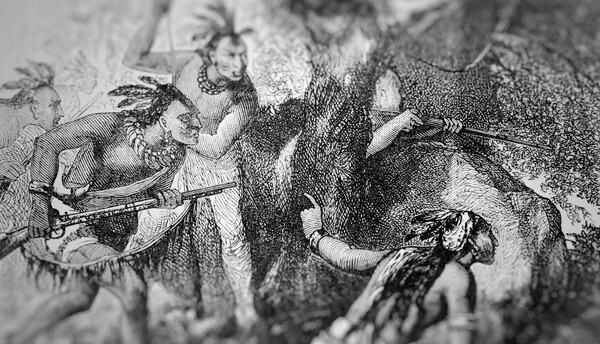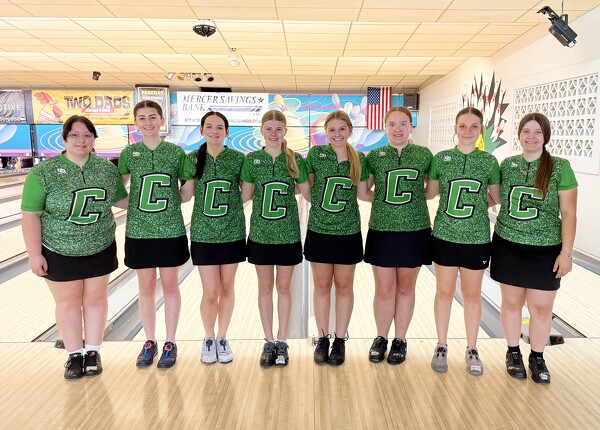
A newspaper account of St. Clair's Defeat at the hands of the Northwest Confederation of Native nations - Shawnee, Delaware, Miami, Ottawa, Ojibwa, Potawatomi, Wyandot and Iroquois. Two-thirds of St. Clair's army was wiped out.
From The History Channel
Battles waged at modern day Fort Recovery during the Northwest Indian War in the late 18th century are prominently featured in the first episode of "Kevin Costner's The West," bringing the multilayered saga that many scholars believe has not been given its proper due to a global audience.
The eight-part documentary series premiered on Memorial Day on the History Channel and can be watched directly on its website. The documentarians said they aimed to take viewers on a journey through the birth of the American West, examining the relentless competition for land, power and identity that forged the nation's history.
The idea of the West, Costner says at the beginning of the series, evokes different images in different people.
"Whatever we see, the West has a power like nowhere else to fire the imagination and stir the soul," he continues. "But if we choose to look a little closer, we can see beyond these images to another kind of story, of people who come to make a home no matter who's already there, of a nation that claims an entire continent, no matter what the cost."
Episode 1, "Fallen Timbers," centers on the violent skirmishes between Native Americans and encroaching settlers that come to a bloody head on Nov. 4, 1791.
U.S. Gen. Arthur St. Clair was tasked by President George Washington with seizing control of the area between the Ohio River and the Great Lakes.

U.S. General Arthur St. Clair and his legion were crushed by a confederacy of Native Americans.
From The History Channel
However, Chief Little Turtle and the Northwest Confederation of Native Americans - Shawnee, Delaware, Miami, Ottawa, Ojibwa, Potawatomi, Wyandot and Iroquois - in a surprise attack scored a decisive victory, claiming two-thirds of St. Clair's men and handing the U.S. Army its worst defeat.
"A survivor described their freshly scalped heads as a field of pumpkins," Costner narrates. "For Little Turtle and his allies, it's a triumph. Not only have they wiped out American's only army, they block westward expansion."
In response, Washington selected Gen. Anthony Wayne to create an army to fight the Native Americans. Wayne established Fort Recovery at the site of St. Clair's deafeat.
At the Battle of Fort Recovery in 1794, Wayne and his legion defeated the largest Native American force ever assembled. In addition to being one of the few times Native Americans attacked a fort, the battle led to the Treaty of Greenville in 1795.
Neither the Fort Recovery State Museum nor the Garst Museum in Greenville were involved with the show. Neither was the Mercer County Historical Society. However, museum officials gave their stamp of approval, praising the accuracy, evenhandedness and effectiveness of the episode's narrative concerning local history.
Cait Clark, the director of the Mercer County Historical Society and administrative director of the Garst Museum, dove into the documentary holding her breath, not knowing if it would do justice to the story of St. Clair, Wayne, Little Turtle and other crucial figures who once roamed the area.
However, she was pleasantly surprised, noting that Costner and his dedication to this type of history certainly came through.
"You don't really get a lot of attention drawn to this area when it comes to the opening of the West, so I was very impressed that they provided what was basically an entire episode just for this area," Clark said.
Acknowledging the time constrictions of a single episode, Clark said producers obviously had to move through a large swath of historical information pretty quickly.
"So some parts, of course, were left out, but it really, I think, gives the public a wonderful idea of what was going on here and how important it was," she said.
Moreover, Clark found the narrative to be accurate.
"I think it is going to give the public a real sense of what those battles were like, what the different sides were," she said.
Kim Rammel, the Fort Recovery museum site manager and president of the Fort Recovery Historical Society, offered a similarly enthusiastic response to episode 1.
"It's a lot to cover and it's a lot of information and they did it well. I was impressed with that," Rammel told the newspaper.
Chris Thompson, a Fort Recovery native, archaeologist at Ball State University and frequent Fort Recovery museum collaborator, appreciated how the show makes clear that the Northwest Territory wasn't a wilderness but a Native American homeland.
"At least one of the things we've concentrated on with the school groups this year - and any group that comes (to the Fort Recovery museum) for a tour, any of our battlefield tours - is to reiterate over and over and over that this was someone's home," Thompson said. "The native peoples were just protecting their homelands against an invasion, no more than we would protect our homelands."
That's why the maps used during tours are so valuable, as they detail the intricacies of Native American settlements, such as Kekionga, located near present day Fort Wayne, Thompson pointed out.
"It shows that they had Miamis, Delawares, and Shawnees living there, and they had orchards and they had cornfields and they had the rivers and the road," she said. "They were raising families and living their lives and trading."

St. Clair's men were overwhelmed by the Native nations' style of combat. They were taken by surprised and devastated.
From The History Channel
Clark was thrilled to see that William Wells made the cut. Wells was a white American captured by the Miami Indians when he was 13. He grew up to be a warrior, took part in St. Clair's Defeat and was Little Turtle's son in law. He later switched sides and became a head scout for Wayne at the decisive Battle of Fallen Timbers.
"The amount of time they spent on the story of William Wells was very, very impressive to me," Clark said. "Seeing the portrayal of his life among the native people as well as being taken from his white family, but then changing sides to be an interpreter, seeing that balance there … the attention to detail, it was just amazing and it was very well-balanced."
The chronicle of the northwest expansion is fleshed out by a host of experts, among them Pulitzer Prize-winning biographer Doris Kearns Goodwin; Cam Shriver, senior research associate in the Myaamia Center at Miami University in Oxford; Daryl Baldwin, executive director of the Myaamia Center; and Clay Jenkinson, a humanities scholar.
Shriver came to Fort Recovery in November 2016 to take part in a symposium dedicated to the Battle on the Wabash in 1791, also known as St. Clair's Defeat.
"It's funny because a couple of the commentators are people that we know," Thompson said. "Cam Shriver from the Myaamia Center and Daryl Baldwin, the director of the Myaamia Center, we know them and we visit with them when we're in Oxford or Oklahoma."
The museum over the years has also hosted George Ironstrack, assistant director of the Myaamia Center, and other Native American scholars and speakers. Last October, the museum held a free two-day event featuring citizens of four federally recognized tribes whose ancestors were part of a confederacy that routed St. Clair, including Chief Glenna Wallace of the Eastern Shawnee Tribe of Oklahoma.
Clark said she's been friends with Jenkinson for several years.
"We've kind of tossed ideas off of each other in the past, shared some of our writings with each other," she said. "It was great seeing him talk about the West, not just the West that he and I study, which would be primarily Lewis and Clark, but talking about the West where it started here."
Rammel marveled at how deftly the episode told a complex story involving a wide cast of historical figures and events in a relatively fast and understandable way. She feels it could be a useful learning tool for the museum.
"I think it's exciting because I think it was beautifully done," she said. "The visuals are very, I think, engaging, and in my head I'm thinking, 'How can I get this out to a broader audience, how to promote it for the History Channel or somehow run it in the museum?' … I want people to see this. It's so well done."
Clark had already been working on a new presentation about St. Clair's Defeat when the episode premiered on History Channel.
"Since 'The West' has come out, I feel like it's generated a lot of public interest," she said. "We've had several calls into the museum about it, both Garst and up at Mercer. People have been asking, 'Hey, where's this monument at? Can you give me directions to this historical site?' And I think as a result of that, we historians here in this area really need to start taking advantage of moments like this and pushing facts at the public so that they don't just see it as a Hollywood TV show. They realize, 'Hey, this happened in the cornfield behind my house.'"
The Mercer County Historical Society will soon act on creating new programs about this specific part of local and national history as a result of growing interest, Clark added.
"Your history is always closer than you realize, and I think this TV show really illustrates the importance of that," she said. "It's always closer and more important to you than you realize. It could have happened in your backyard."
